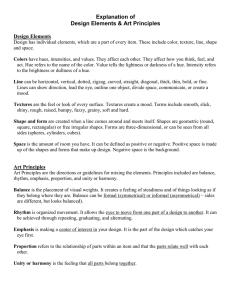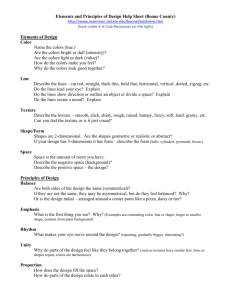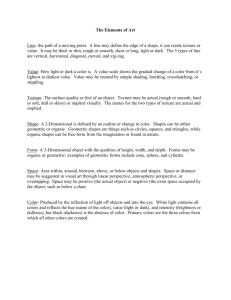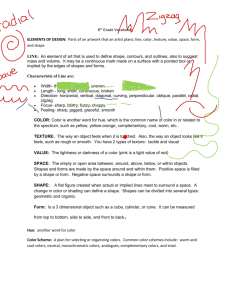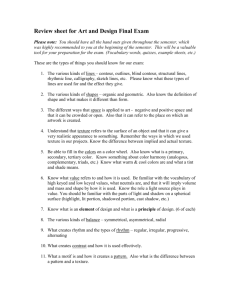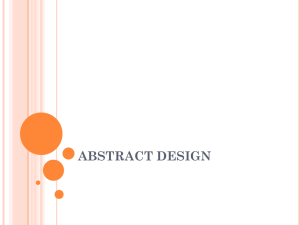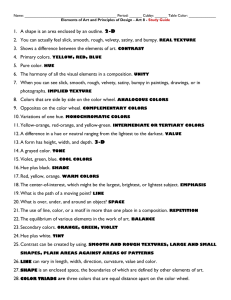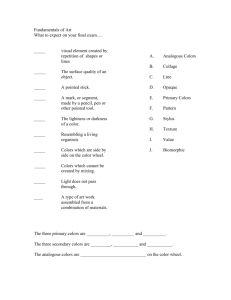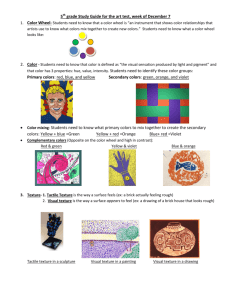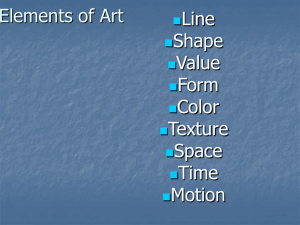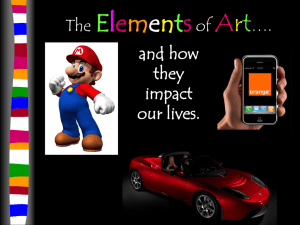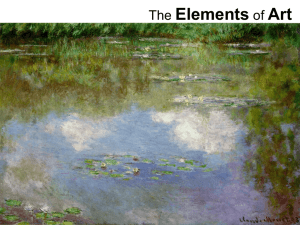S.Concascia Study Guide Art 1/Adv. Art/3D Design Elements of Art
advertisement
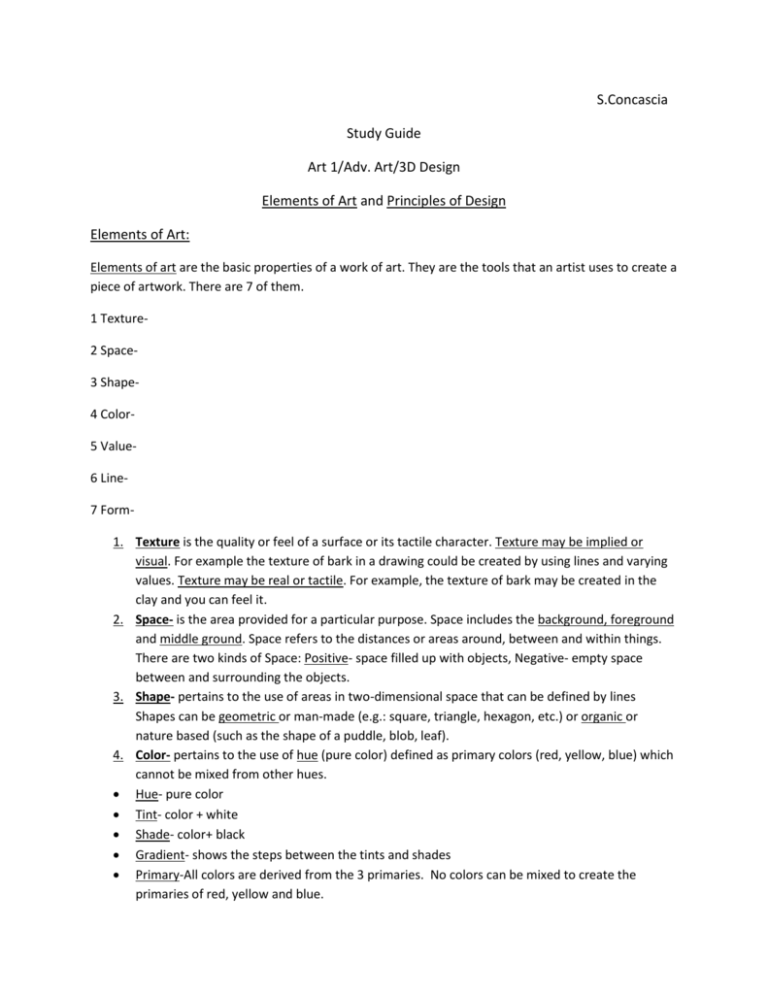
S.Concascia Study Guide Art 1/Adv. Art/3D Design Elements of Art and Principles of Design Elements of Art: Elements of art are the basic properties of a work of art. They are the tools that an artist uses to create a piece of artwork. There are 7 of them. 1 Texture2 Space3 Shape4 Color5 Value6 Line7 Form1. Texture is the quality or feel of a surface or its tactile character. Texture may be implied or visual. For example the texture of bark in a drawing could be created by using lines and varying values. Texture may be real or tactile. For example, the texture of bark may be created in the clay and you can feel it. 2. Space- is the area provided for a particular purpose. Space includes the background, foreground and middle ground. Space refers to the distances or areas around, between and within things. There are two kinds of Space: Positive- space filled up with objects, Negative- empty space between and surrounding the objects. 3. Shape- pertains to the use of areas in two-dimensional space that can be defined by lines Shapes can be geometric or man-made (e.g.: square, triangle, hexagon, etc.) or organic or nature based (such as the shape of a puddle, blob, leaf). 4. Color- pertains to the use of hue (pure color) defined as primary colors (red, yellow, blue) which cannot be mixed from other hues. Hue- pure color Tint- color + white Shade- color+ black Gradient- shows the steps between the tints and shades Primary-All colors are derived from the 3 primaries. No colors can be mixed to create the primaries of red, yellow and blue. Secondary-created by mixing 2 primary colors: red+blue=purple, red+yellow=orange, yellow+blue=green Complementary- colors opposite on the color wheel, Red/Green, Blue/Orange, Yellow/Purple. Analagous- 3 “neighboring” colors on the color wheel, eg. yellow/yellow-green/green. Monochromatic- 1 hue + tints and shades of the hue Tertiary- combinations of one primary and one secondary color. There are 6 of them: yellowgreen, blue-green, Blue-violet, Red-violet, yellow-orange, red-orange. Warm Colors- reds, yellows, oranges. Creates a sunny warm feeling. Cool Colors- purples, greens, blues. Creates a cold, icy feeling. Neutral Colors- brown, gray, black, white 5. Value- refers to the use of light and dark/highlights and shadows. 6. Line- a mark that spans a distance between two points. Line creates a shape. 7. Form- solid objects that have height, width and depth. In a 2 dimensional work of art, form can be implied through the use of values to make an object appear three dimensional Principles of Design: Principles of Design are concepts used to organize or arrange the structural Elements of Art. How an artist applies these principles determines how successful a design may be. There are 7 of them: 1. Balance2. Movement3. Rhythm4. Contrast5. Emphasis6. Pattern7. Unity- 1. Balance- a feeling of visual equality in shape, form, value, color, etc. Objects, values, colors, textures, shapes, forms, etc., can be used in creating a balance in a composition. •Symmetrical- Evenly balanced •Asymmetrical- Un-evenly balanced. •Radial- Arranged from a central point 2. Contrast- a change in value creating visual discord in a composition. Contrast shows the difference between shapes and can be used as a background to bring objects out and forward in a design. It can also be used to create an area of emphasis. 3. Emphasis-(also called Focal Point or Center of Interest) - an area that first attracts attention in a composition. It is more important when compared to the other objects or elements in a composition. Created by contrast of values, more colors, and/or placement in the format. 4. Unity- (also called Harmony): an element that brings together a composition. It could be a line, shape, color, etc. 5. Pattern- repetition of shapes, lines, colors in an ordered way. 6. Movement- a visual flow through the composition. The suggestion of motion in a composition as you move from object to object by way of placement and position. . 7. Rhythm- movement in which some elements recur regularly. Like a dance it will have a flow of objects that will seem to be like the beat of music.
